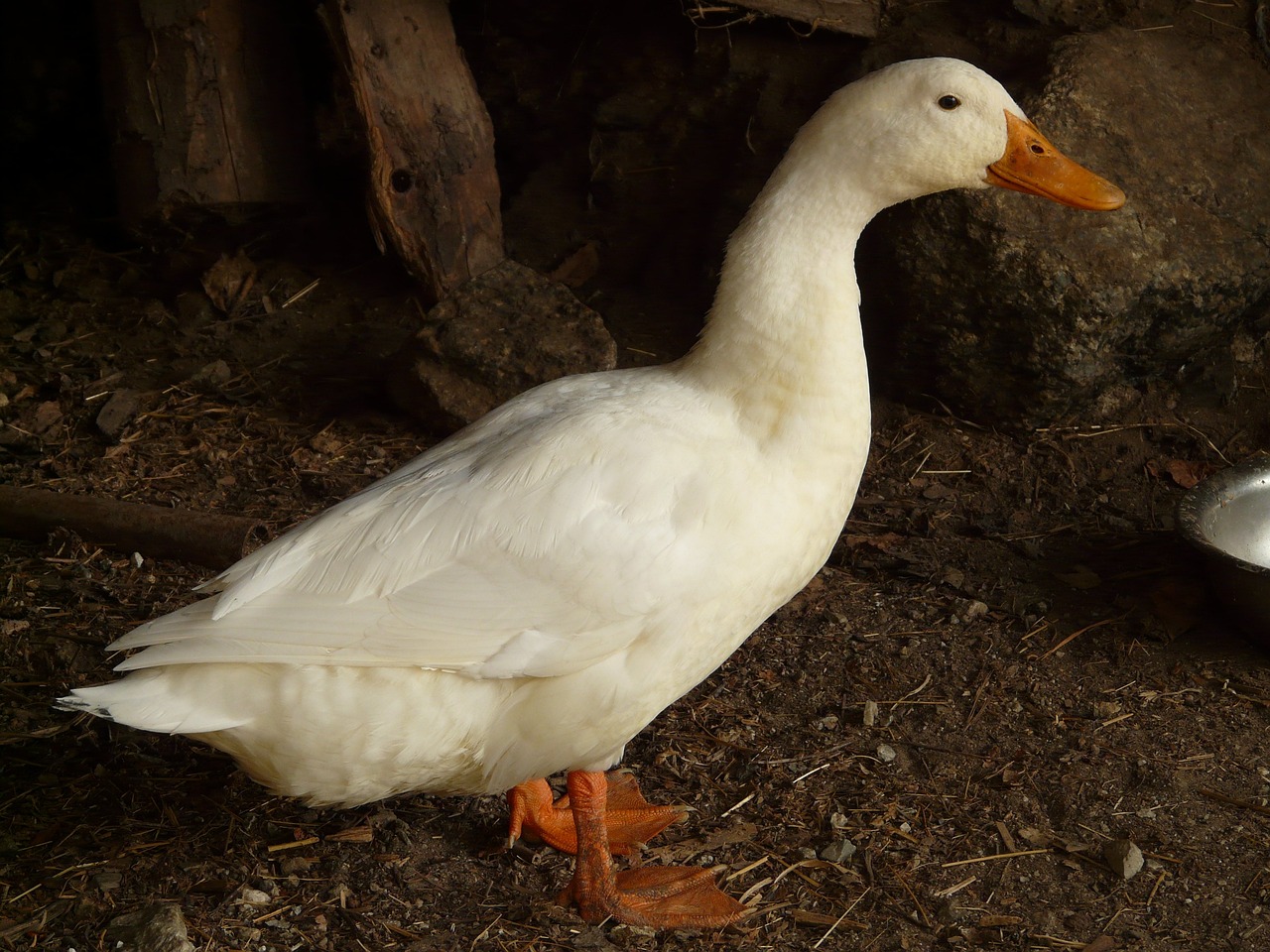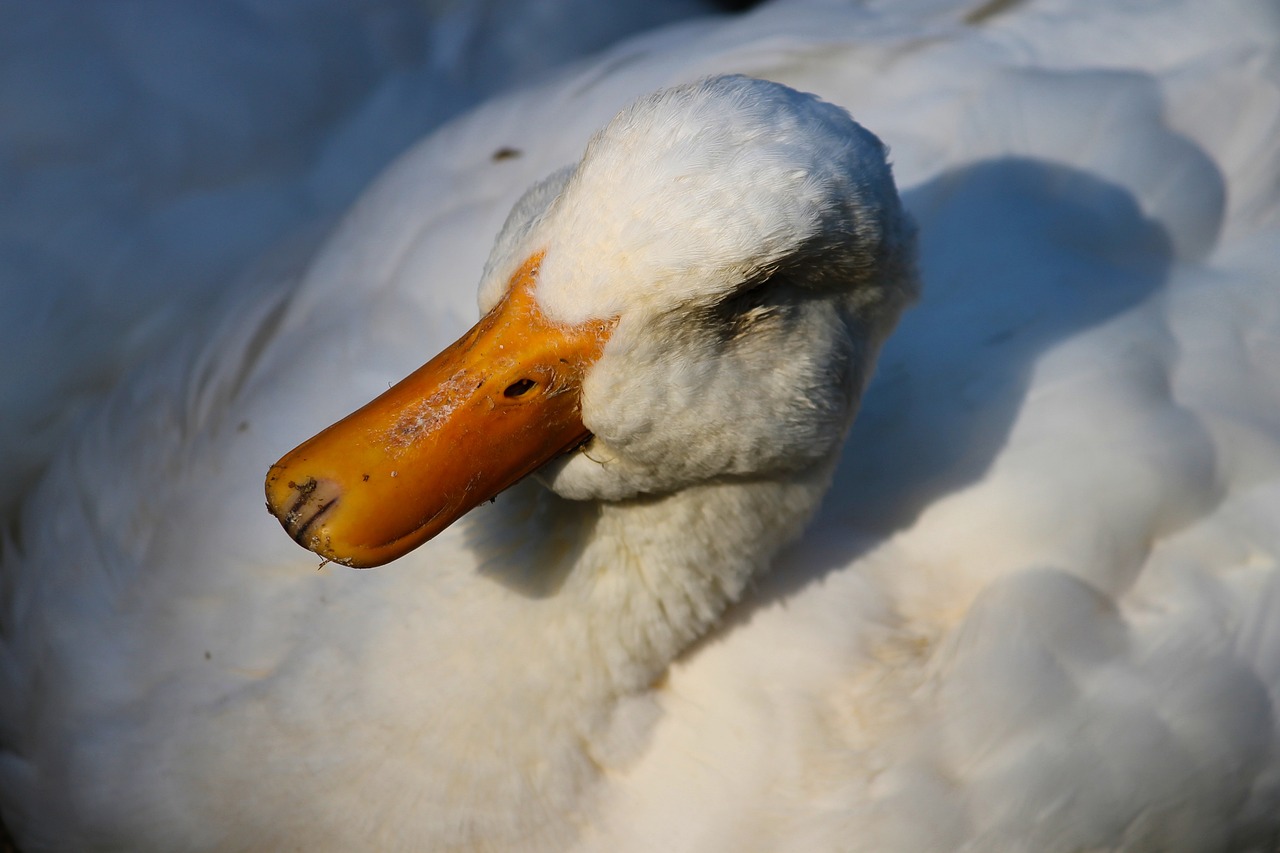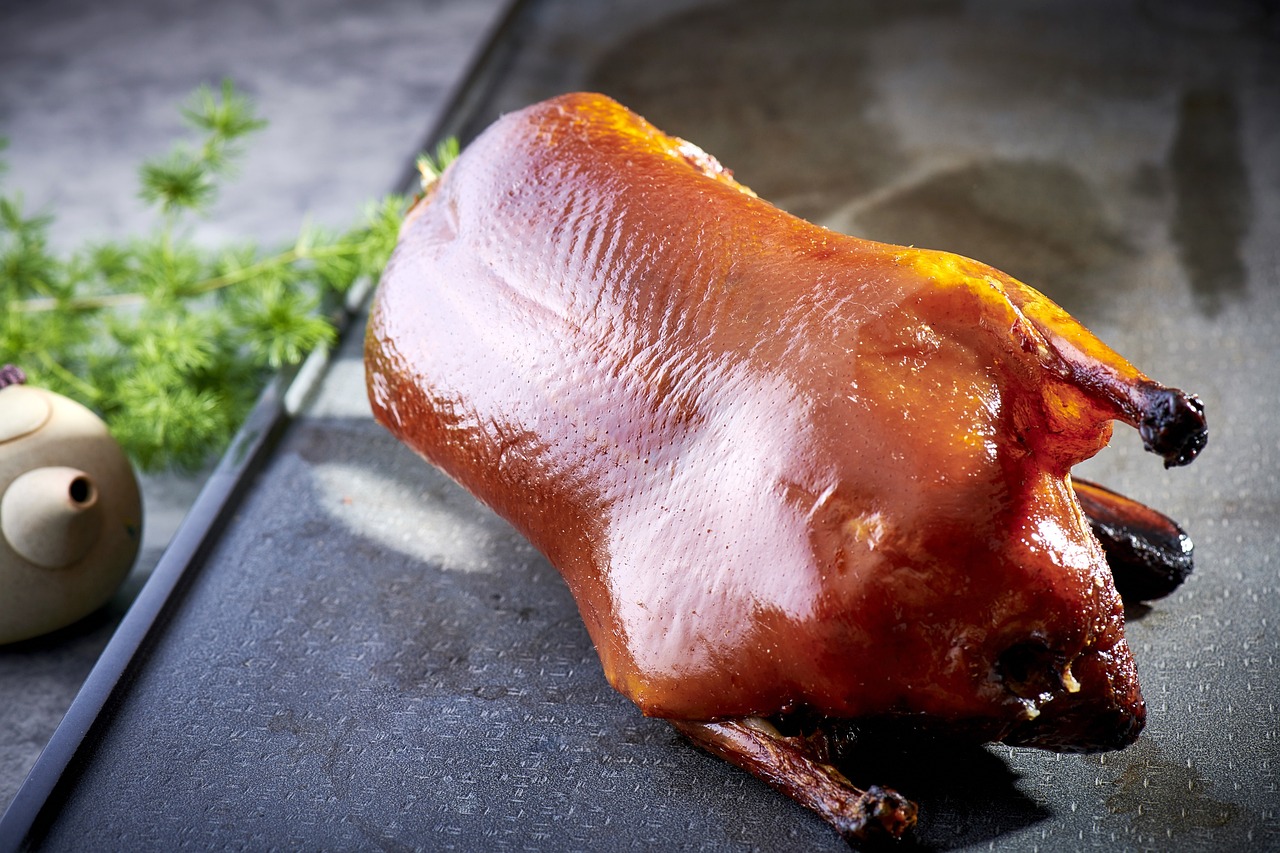Peking Duck: Crispy Duck Served with Pancakes, Sauce, and Scallions

When it comes to Peking Duck, get ready for a culinary explosion of flavors and textures that will leave you craving more. This traditional Chinese dish is a masterpiece of crispy duck served with delicate pancakes, rich hoisin sauce, and fresh scallions, creating a symphony of taste in every bite.
Imagine sinking your teeth into succulent duck meat encased in a thin, crispy skin that crackles with each bite, perfectly complemented by the softness of the pancakes and the bold flavors of the sauce and scallions. It's a harmonious blend that surprises and delights the palate with every mouthful.
As you take a journey through the history of Peking Duck, you'll uncover its origins as a royal delicacy in imperial China, where it was reserved for the elite of the royal court. From its humble beginnings to its transformation into a globally beloved dish, Peking Duck has stood the test of time, captivating taste buds around the world.
Delving into the preparation techniques of Peking Duck reveals the meticulous process involved in creating this culinary masterpiece. From air-drying the duck to infusing it with flavorful seasonings and roasting it to perfection in a specialized oven, each step contributes to the dish's signature crispy skin and tender meat.
When it comes to serving Peking Duck, presentation is key. Witness the artistry of carving the duck tableside, skillfully slicing each piece to be wrapped in a pancake with a dollop of sauce and a sprinkle of scallions. The visual appeal of the dish is just as important as its taste, elevating the dining experience to new heights.
Modern variations of Peking Duck bring a fresh twist to this classic dish, blending traditional flavors with innovative techniques to create fusion masterpieces. Whether it's Peking Duck tacos or burgers, the dish continues to captivate diners with its versatility and ability to adapt to evolving culinary trends.
History of Peking Duck
Delve into the fascinating history of Peking Duck, a culinary treasure with roots deeply embedded in the rich tapestry of Chinese gastronomy. Originating in imperial China, Peking Duck was once a dish exclusively enjoyed by the elite members of the royal court, symbolizing luxury and sophistication. The meticulous preparation and serving of Peking Duck were elevated to an art form, showcasing the culinary prowess of Chinese chefs and the opulence of the imperial dining experience.
Over the centuries, Peking Duck transcended its aristocratic origins to become a beloved dish cherished by people from all walks of life. The evolution of this iconic delicacy mirrors the changing tides of Chinese history, embodying tradition, innovation, and cultural heritage in each crispy bite. As the dish gained popularity beyond the confines of the palace walls, it became synonymous with Chinese culinary excellence and a symbol of national pride.
The journey of Peking Duck from a regal indulgence to a global culinary sensation is a testament to its enduring appeal and timeless allure. Today, this legendary dish continues to captivate diners around the world, offering a tantalizing blend of flavors and textures that transcend cultural boundaries. Whether enjoyed in a traditional Beijing restaurant or savored in a modern fusion dish, Peking Duck remains a culinary masterpiece that celebrates the artistry and craftsmanship of Chinese cuisine.
Preparation Techniques
When it comes to preparing the iconic dish of Peking Duck, meticulous attention to detail is key to achieving the perfect balance of flavors and textures. The preparation techniques involved in crafting this culinary masterpiece are steeped in tradition and require precision from start to finish.
One of the crucial steps in preparing Peking Duck is the process of air-drying the duck. This method involves hanging the duck in a cool, well-ventilated area for an extended period, allowing the skin to dry out gradually. The air-drying process is essential for achieving the desired crispy texture of the duck's skin when it is roasted.
Seasoning the duck is another integral part of the preparation process. A blend of spices, typically including ingredients like ginger, garlic, and Chinese five-spice powder, is rubbed both inside and outside the duck to infuse it with aromatic flavors. The seasoning not only enhances the taste of the duck but also contributes to its overall succulence.
Roasting the seasoned duck in a specialized oven is where the magic truly happens. The duck is hung upright in the oven, allowing the fat to render and the skin to crisp up beautifully. The high temperature and unique cooking method result in the signature golden-brown, crackling skin that Peking Duck is famous for.
To ensure that the duck is cooked to perfection, it is often roasted multiple times at varying temperatures. This meticulous roasting process is crucial for achieving tender, juicy meat that complements the crispy skin, creating a harmonious contrast of textures with each bite.
Once the duck is perfectly roasted, it is skillfully carved at the table by experienced chefs, showcasing their expertise in precision slicing. The slices of succulent duck meat are then elegantly arranged on a serving platter, ready to be assembled into delectable pancakes.
Assembling the Peking Duck pancakes is an art form in itself. Each thin pancake is topped with a generous portion of duck slices, a drizzle of rich hoisin sauce, and a sprinkle of finely sliced scallions. The combination of savory duck, sweet hoisin sauce, and fresh scallions creates a symphony of flavors that delights the palate with each bite.
Overall, the preparation techniques involved in making Peking Duck are a testament to the culinary craftsmanship and rich heritage of Chinese cuisine. From the meticulous air-drying process to the final assembly of the dish, every step is carefully orchestrated to create a dining experience that is as visually stunning as it is delicious.
Serving and Presentation
When it comes to serving and presenting Peking Duck, it's not just about the taste but also the visual appeal and the experience that accompanies it. The art of serving this iconic dish involves a series of meticulous steps that elevate the dining experience to a whole new level. Let's delve into the intricate details that go into presenting Peking Duck:
- Carving: One of the most anticipated moments in a Peking Duck dining experience is the carving of the duck at the table. This process is not just about separating the meat from the skin but is a performance in itself, showcasing the skill and precision of the chef.
- Assembly: Once the duck is expertly carved, the next step is the assembly of each pancake. Thin and delicate pancakes are carefully layered with slices of succulent duck meat, a dollop of rich hoisin sauce, and a sprinkle of finely sliced scallions. The combination of flavors and textures in each bite is what makes Peking Duck truly exceptional.
- Presentation: Presentation plays a crucial role in Chinese cuisine, and Peking Duck is no exception. The assembled pancakes are elegantly arranged on a serving platter, creating a visually appealing display that is almost as delightful to look at as it is to eat. The vibrant colors of the scallions against the glistening duck skin make for a feast for the eyes.
- Accompaniments: Alongside the star of the show, Peking Duck is often served with an array of traditional accompaniments such as cucumber sticks, radish strips, and sometimes even melon slices. These fresh and crunchy elements provide a refreshing contrast to the rich flavors of the duck.
Overall, the serving and presentation of Peking Duck are a harmonious blend of culinary artistry and cultural tradition. Each element, from the carving of the duck to the assembly of the pancakes, is carefully orchestrated to create a dining experience that is not just about satisfying hunger but also about indulging in a sensory journey that celebrates the rich heritage of Chinese cuisine.
Modern Variations and Popularity
Exploring modern variations and the widespread popularity of Peking Duck unveils a fascinating journey of culinary innovation and global admiration. The traditional dish, once confined to the boundaries of ancient Chinese kitchens, has now transcended cultural borders to captivate taste buds worldwide. Its enduring allure lies in the harmonious blend of crispy textures, succulent meat, and rich flavors that continue to inspire chefs and delight diners.
One of the remarkable aspects of Peking Duck's evolution is the emergence of modern interpretations that push the boundaries of traditional flavors while paying homage to its roots. Chefs around the world have reimagined this classic dish, infusing it with innovative ingredients and techniques to create unique culinary experiences. From Peking Duck tacos to fusion dishes marrying Eastern and Western influences, the versatility of this iconic dish knows no bounds.
The dish's popularity has skyrocketed in recent years, with restaurants across the globe featuring Peking Duck on their menus to cater to a growing demand for authentic Chinese cuisine. Its reputation as a symbol of luxury and exquisite taste has made it a staple in fine dining establishments and casual eateries alike, appealing to a diverse range of palates and preferences.
Moreover, the rise of social media and food tourism has further propelled the fame of Peking Duck, with captivating images and glowing reviews spreading like wildfire online. Food enthusiasts flock to renowned establishments known for their exceptional Peking Duck, eager to savor this culinary masterpiece and share their gastronomic adventures with the world.
As Peking Duck continues to capture the hearts and appetites of food lovers globally, its timeless appeal and cultural significance endure, ensuring its legacy as a beloved culinary treasure that transcends time and borders.



 HazalVardal
HazalVardal 





